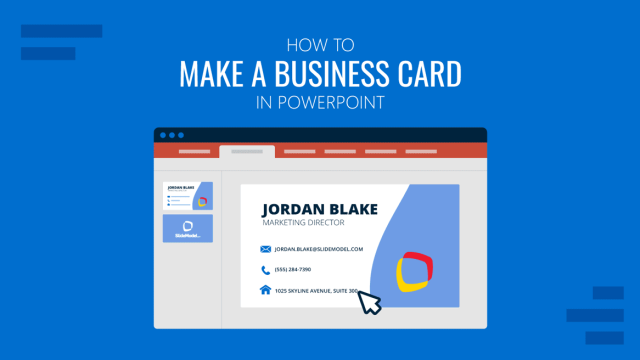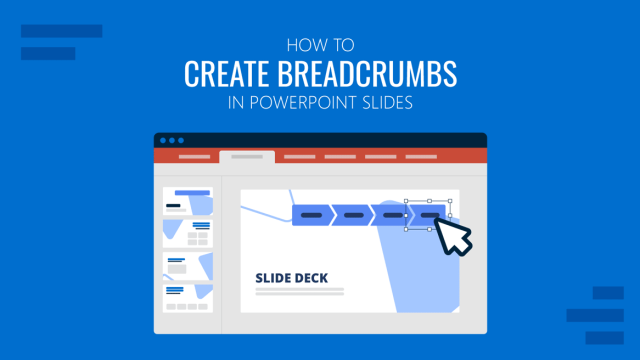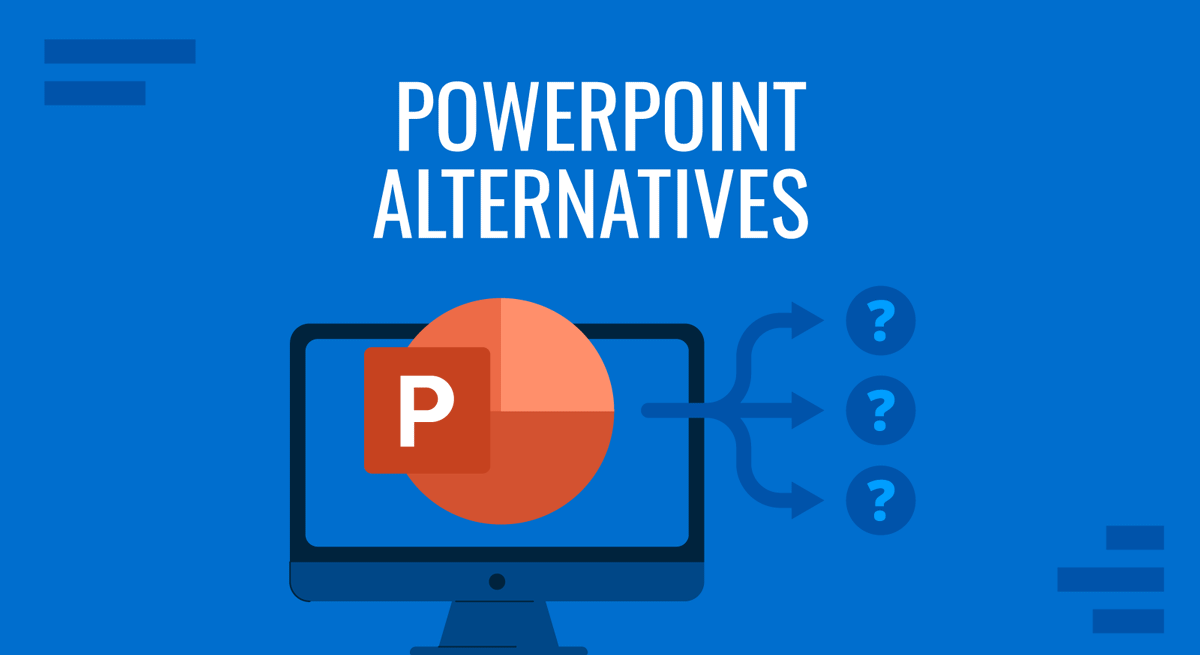
Whether you’re looking to broaden your skill set, streamline your presentation design process with better-tailored solutions, or just looking to try out new software, 2025 is your chance to discover PowerPoint alternatives. In this article, you will find a curated list of solutions, from free to premium PPT alternatives, to enhance your presentation skills, speed up your design process, and even build presentation decks from scratch using AI technology.
If, on the other hand, you’re browsing to find creative designs, don’t forget to check our selection of ready-made PowerPoint templates.
Table of Contents
- Why should you try PowerPoint alternatives?
- Google Slides
- SlideModel.ai
- Keynote
- Canva
- Figma Slides
- Prezi
- Visme
- Piktochart
- Pitch
- Beautiful.ai
- Haiku Deck
- Zoho Show
- Ludus
- Slides.com
- Powtoon
- Adobe Express
- Venngage
Why should you try PowerPoint alternatives?
Cost Savings
PowerPoint is part of the Microsoft Office suite, which requires a subscription or one-time purchase. Free or more affordable alternatives and presentation platforms like Google Slides, Canva, or LibreOffice Impress can provide similar functionality without the cost.
Cloud-Based Collaboration
PowerPoint’s collaboration features are improving, but alternatives like Google Slides offer seamless real-time collaboration with auto-saving, making it easier for teams to work together remotely.
Unique Design and Animation Features
Some alternatives, such as Prezi and Canva, provide dynamic, non-linear presentations and modern design templates that make slides more engaging than traditional PowerPoint formats.
Lighter and More Efficient
Some PowerPoint alternatives consume fewer system resources, load faster, and don’t require installations, making them a good option for lower-end devices.
Google Slides
The first PowerPoint presentation alternative software we will analyze is Google Slides. A cloud-first presentation platform for teams prioritizing real-time collaboration over complex design features. As part of the Google Workspace ecosystem, it integrates seamlessly with tools like Google Drive, Docs, and Sheets, allowing users to embed live charts, tables, or even entire documents directly into slides. This makes it ideal for data-driven presentations where figures need to update dynamically—for example, quarterly business reviews or project status reports.
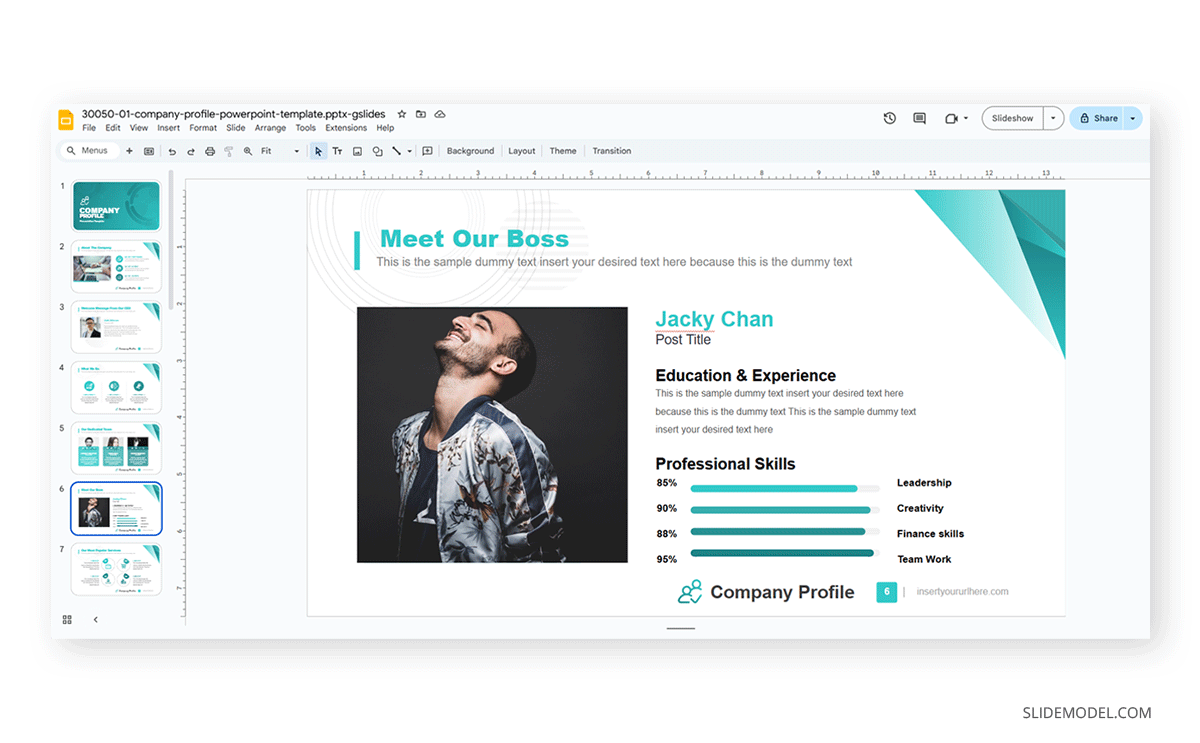
The interface is intentionally minimalist, resembling a stripped-down version of PowerPoint, which lowers the learning curve for new users but limits advanced customization. Templates are functional but lack the polish of premium tools like Keynote or Canva, and transitions/animations are limited to basic fades and slides. However, its strength lies in accessibility: presentations auto-save to the cloud, work offline with Chrome extensions, and can be shared via a link with view/edit permissions. For remote teams, features like comment threads, @mentions, and version history (tracking changes over 30 days) streamline feedback loops.
Completely free, Google Slides may seem basic for some users who haven’t tested the power behind Google Slides templates, but the truth is we can customize our tool range by installing third-party add-ons called Extensions. Some remarkable examples are Slides Translator, Icons by Noun Project, Hypatia Create, Mote, etc.
Export options include PowerPoint (.pptx), PDF, and even publish-to-web embeds, though formatting inconsistencies can occur when converting to non-Google formats.
SlideModel AI
Unlike any other tool mentioned in this article, SlideModel AI is not a PowerPoint alternative but rather a new tool to enhance your PowerPoint presentations. This web-based application and presentation platform with AI integrates state-of-the-art LLM with professionally designed PPT templates to create a mesmerizing slide deck in just seconds based on the input provided by users.
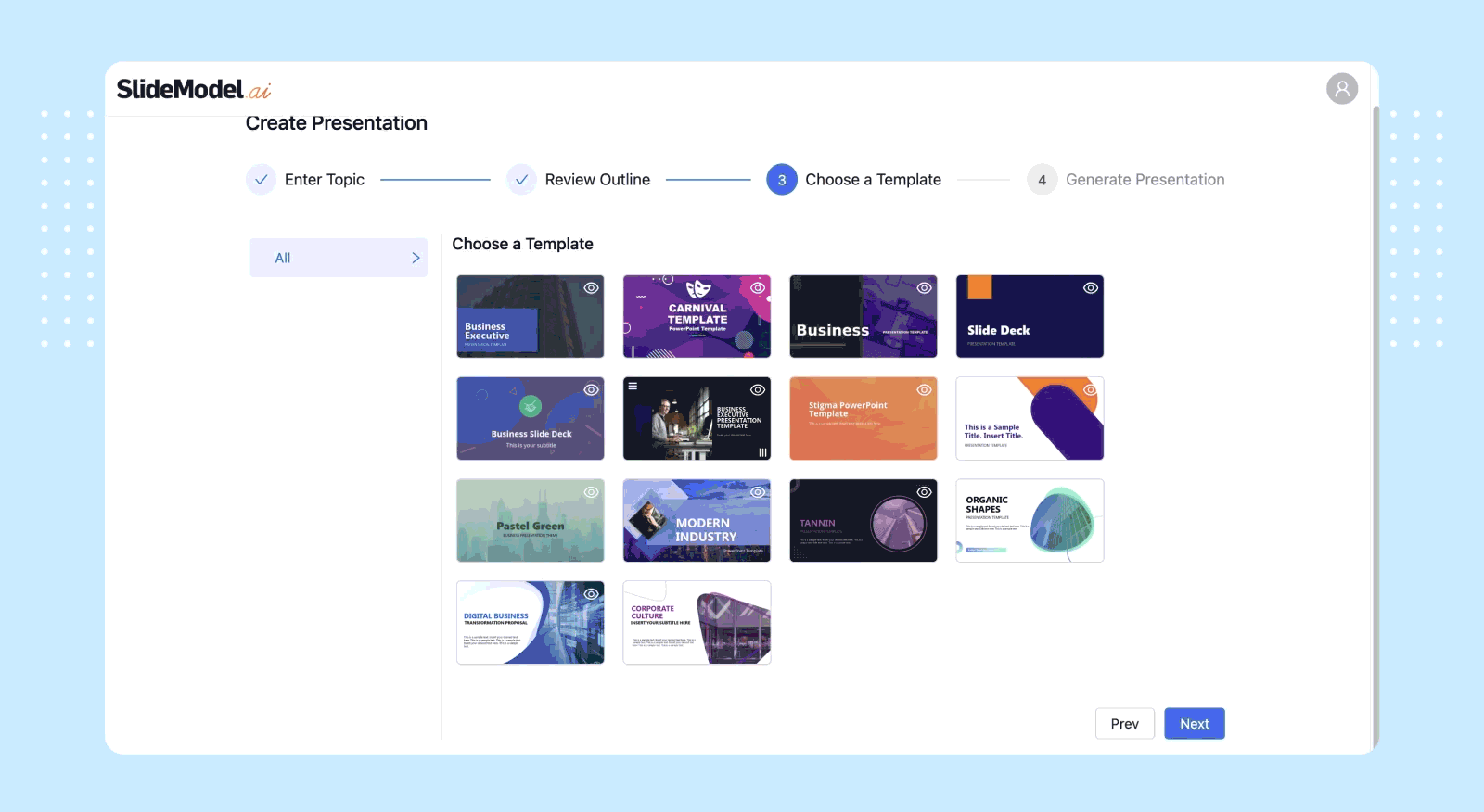
The experience is seamless. You only need to deliver a detailed prompt into the tool or upload a document (DOC, DOCX, or PDF) so the AI technology can crawl it to extract the core pieces of information and generate an outline you can iterate as many times as you prefer. Once approved, select the aesthetics by picking the presentation template, reviewing the details, and clicking “Generate Presentation.” The result is an AI-driven slide deck integrating your content into the slide layout. You can use SlideModel AI for a variety of presentation needs, e.g. to turn an Academic research paper into PowerPoint, or just to speed up the presentation design process generating an initial version of your slide deck.
Images are totally customizable with a couple of clicks. You can upload graphics from your computer into the placeholder areas or work your way with prompts to produce text-to-image AI graphics powered by DALL-E, Stable Diffusion, or Flux. Slide layouts are also customizable, and we can regenerate them based on a prompt.
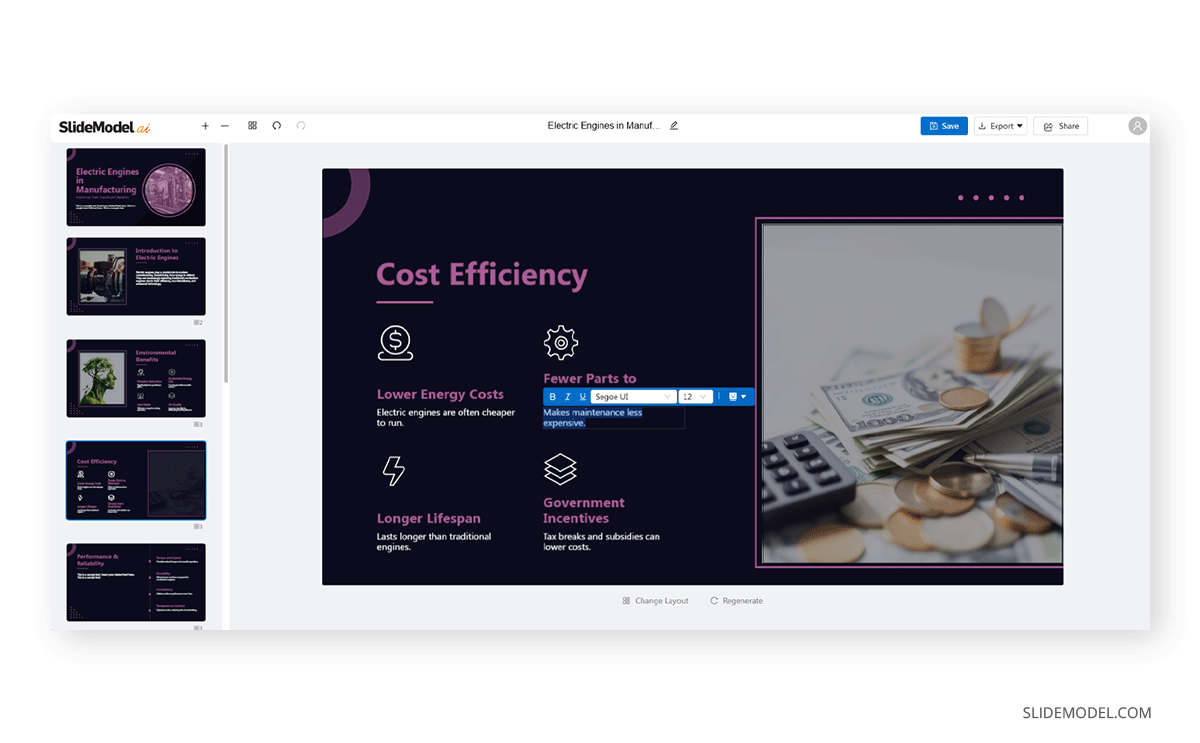
Finally, once you’re happy with your presentation deck’s overall appearance and content, you can export it into PowerPoint with 100% customizable shapes, text, and graphics for seamless integration. The best part? If you were looking for a PowerPoint alternative software, SlideModel.ai also has a native export to Google Slides.
Keynote
In case you’re a Mac user, Keynote is Apple’s flagship presentation software, renowned for its precision design tools and cinematic transitions. Built exclusively for macOS and iOS, it leverages the hardware-software synergy of Apple devices to deliver buttery-smooth animations like the “Magic Move” effect, which automatically animates objects between slides. This makes it a favorite among creatives—graphic designers, filmmakers, and marketers—who demand pixel-perfect control over typography, gradients, and vector graphics.
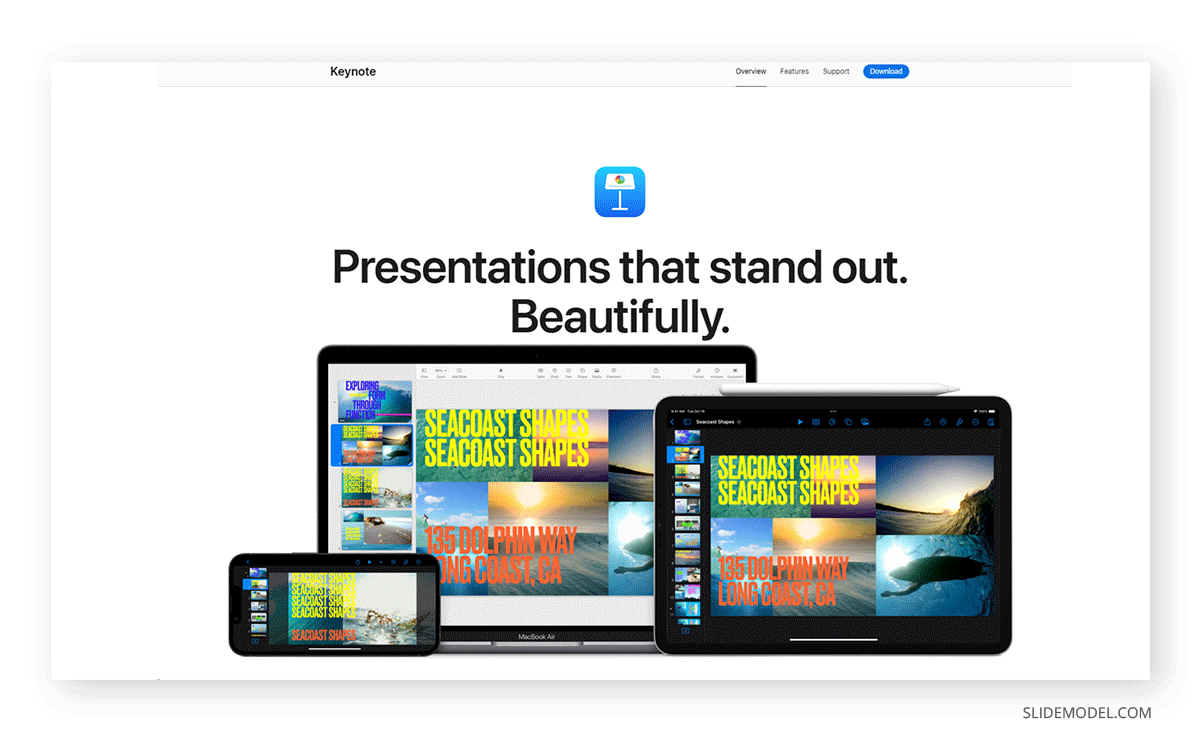
Unlike cloud-based tools, Keynote operates natively on Apple devices, offering offline reliability and faster rendering of high-resolution assets. Its iCloud sync ensures presentations update across devices, though real-time collaboration is limited to users on macOS Ventura or later, creating friction for mixed-OS teams. Export options are robust: slides can be saved as PowerPoint files (with minor formatting quirks), 4K videos, or interactive PDFs.
For Apple-centric users, features like Live Video (embedding camera feeds mid-presentation) and iPhone remote control add polish to live presentations. Pricing is free for all Apple device owners, which is a strategic move to lock users into the ecosystem. However, the lack of Windows/Linux support and no web editor (unlike Google Slides) limits cross-platform usability. Keynote’s true value shines in scenarios where design integrity matters—think TED Talks, annual reports, or investor pitches—but its learning curve for non-designers and absence of cloud-based teamwork tools make it less versatile for large organizations.
Canva
Presenters who need an all-in-one solution suitable for presentation design, handouts, social media assets, videos, etc., must already be familiar with this software. Canva has democratized design for non-experts, offering a drag-and-drop presentation builder with an extensive library of templates tailored to social media, education, and startups. Some consider Canva better than PowerPoint because its intuitive interface lets users customize slides with branded fonts, colors, and logos via the Canva Brand Kit feature, a boon for small businesses lacking graphic designers. Advanced tools like AI-powered background removers, photo enhancers, and a built-in stock photo collection to simplify visual storytelling.
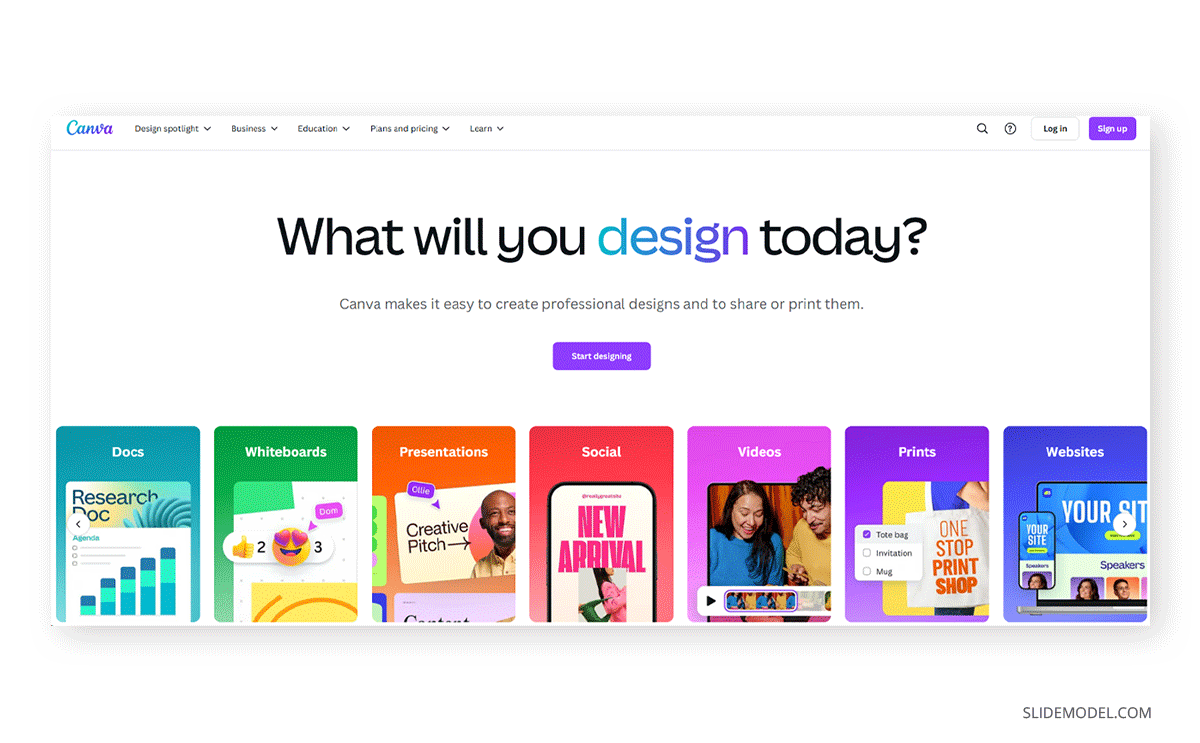
Collaboration is seamless: teams co-edit in real time, leave comments, and share via links or social platforms. While animations and transitions are less sophisticated than PowerPoint’s, features like embedded videos, audio clips, and live data widgets (via integrations with Google Sheets) cater to modern, multimedia-heavy presentations.
Export options include PDF, video, and even print-ready files, though resolution limits apply for large-format printing. Canva shines in agility—creating Instagram stories, pitch decks, or workshop slides in minutes—but falters with complex data visualization. For example, pivot tables or interactive charts require manual design or third-party tools. Its mobile app is notably robust, enabling on-the-fly edits, a perk for influencers and field marketers.
You can check our guide on integrating Canva with PowerPoint for presentations to create a powerful slide design workflow. We also crafted an article for users seeking to find Canva alternatives.
Figma Slides
For IT professionals looking for familiar solutions for presentation design, Figma Slides is a tool integrated into the Figma ecosystem, designed to unify design workflows and collaborative storytelling. Launched in late 2024 and updated in 2025, it targets designers and teams seeking seamless transitions from wireframes to polished presentations.
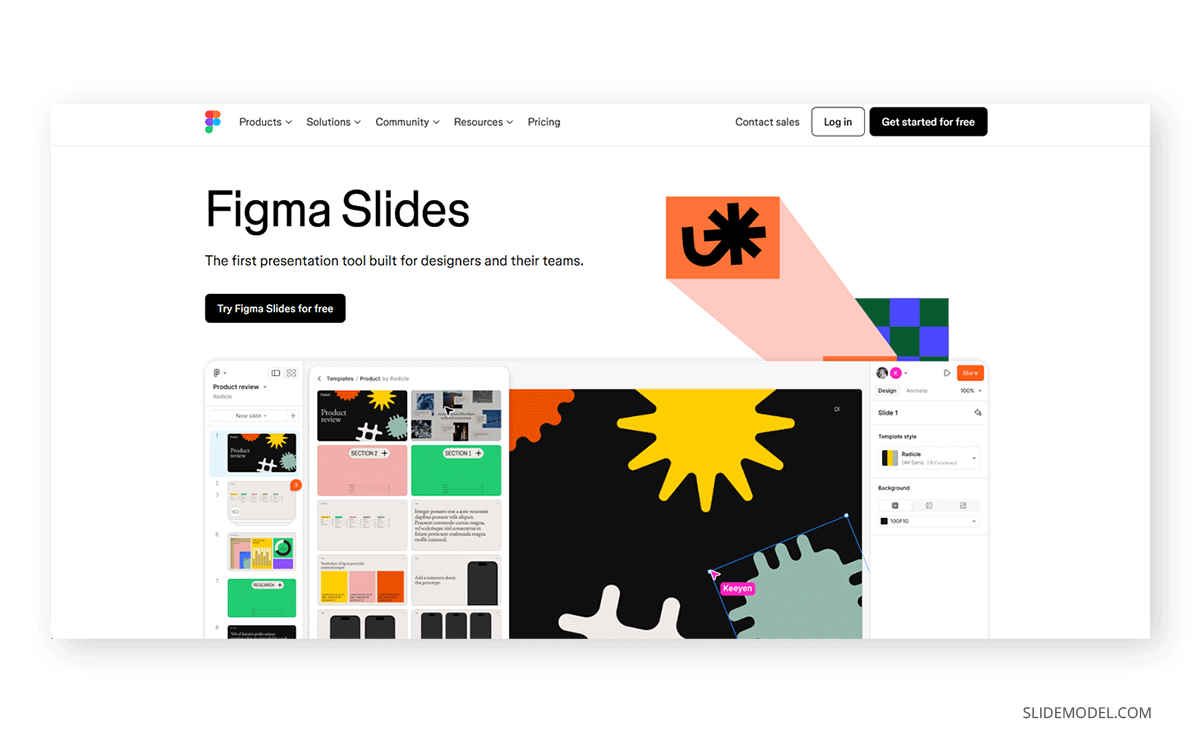
The tool integrates seamlessly with Figma’s core features, such as Auto Layout and prototyping. Users can toggle between “Design Mode” and presentation editing. This eliminates the need to export assets to PowerPoint or Keynote, streamlining the creative process. The platform also includes AI-powered tools to accelerate deck creation.
One of Figma Slides’ standout features is its emphasis on interactivity. Presenters can embed live prototypes, polls, and alignment scales directly into slides, fostering real-time audience engagement. For example, live polls let viewers vote on questions mid-presentation, while clickable prototypes showcase product functionality in action.
The learning curve can be steep for non-Figma users, especially when navigating advanced features. Additionally, the platform’s transition from a free beta to a paid model in 2025 may deter budget-conscious users. Despite these drawbacks, Figma Slides excels for design-centric teams that prioritize interactivity and brand consistency. Its unified workflow—combining design and presentation phases in one platform—makes it a compelling choice for agencies, product teams, and startups.
Check our guide on Figma presentations to learn more about the capabilities Figma has to offer.
Prezi
Prezi upends the slide-by-slide paradigm with a zoomable canvas that lets presenters navigate ideas spatially, like a mind map. This nonlinear format is ideal for storytelling—TED speakers use it to create narrative tension by zooming into details or panning across big-p concepts. The editor allows users to place content (text, images, videos) on a single infinite canvas, connected by customizable “paths” that dictate the presentation flow.
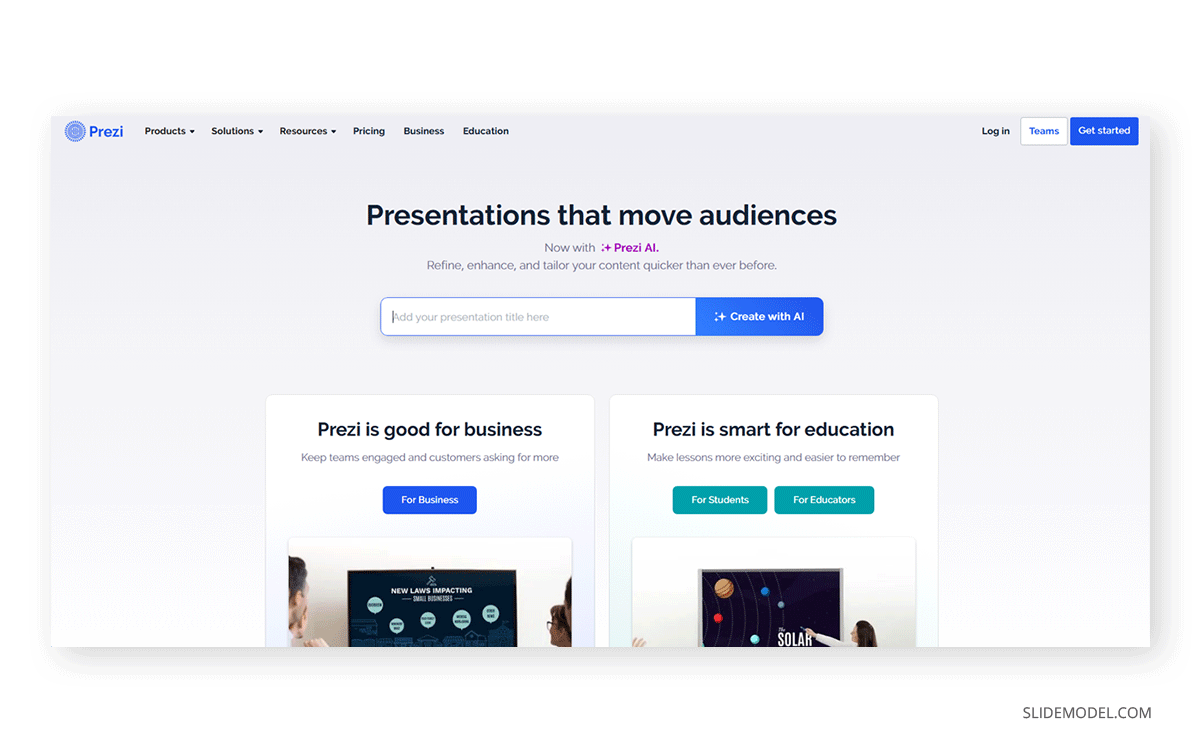
Features like “Conversational Presenting” let presenters switch topics based on audience input, fostering engagement in workshops or sales pitches. The templates are modern, with bold colors and geometric layouts, though customization options are less significant than those in PowerPoint.
Export options are limited—Prezi’s magic fades when converted to static PDFs or videos, so it’s best used live or shared via Prezi’s cloud. Integration with Zoom and Microsoft Teams enhances virtual presentations, but internet dependency can be a hurdle. For industries like consulting, training, or creative agencies, where audience engagement trumps tradition, Prezi offers a memorable alternative to “death by PowerPoint.”
Visme
One of the most popular options for users seeking online presentation makers is Visme, an all-in-one visual communication hub that allows users to craft presentations, infographics, and data dashboards.
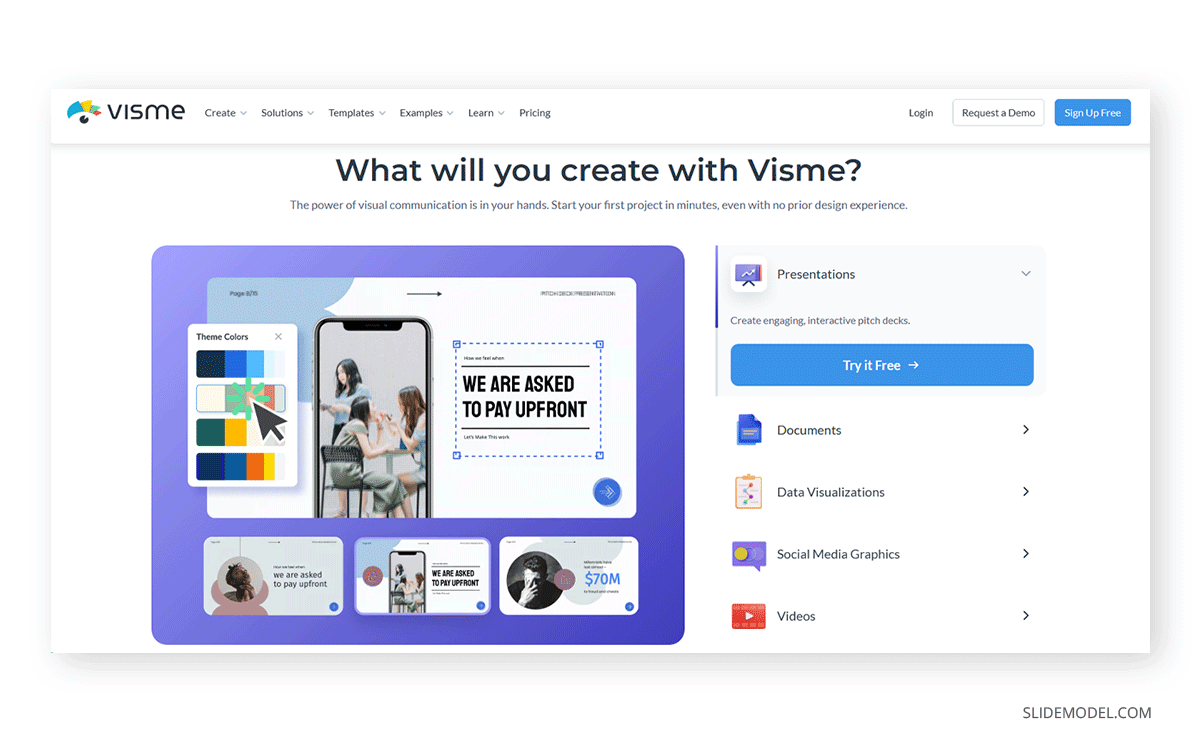
Its chart engine supports 30+ graph types, including radar charts and heat maps, with interactive presentation elements like hover effects or clickable tabs—ideal for embedding in websites or digital reports. The platform offers 1,000+ templates categorized by industry (nonprofit, tech, healthcare), each customizable with drag-and-drop ease. Advanced features include a built-in screen recorder for demo videos, AI-powered text-to-image generators, and an AI-generator chatbot to create a slide deck in minutes based on your input. This feature may alienate some users who are accustomed to working with PowerPoint or other traditional presentation software options.
Collaboration is limited to comments and versioning, lacking real-time co-editing, but its asset library (icons, stock photos, 3D illustrations) rivals Canva’s. Visme excels in creating evergreen content: interactive annual reports, training modules, or SEO-friendly web embeds. However, animations are basic, and slide decks created with it won’t be 100% editable with PowerPoint or Google Slides. For data analysts, marketers, or educators needing to merge data storytelling with design, Visme bridges the gap between spreadsheets and slides.
Piktochart
How often have you felt frustrated about PowerPoint’s lack of intuitive tools to create infographics? It almost feels as if you’re bound to learn your way through graphic design to create quality infographics or juggle between professional infographic templates, getting overwhelmed by the wide variety of options that may not suit your data. Piktochart is your go-to alternative to PowerPoint, born as a niche tool for infographics. Still, nowadays, it offers an extensive selection of tools for presentation, featuring report templates and even social media content-creating options.
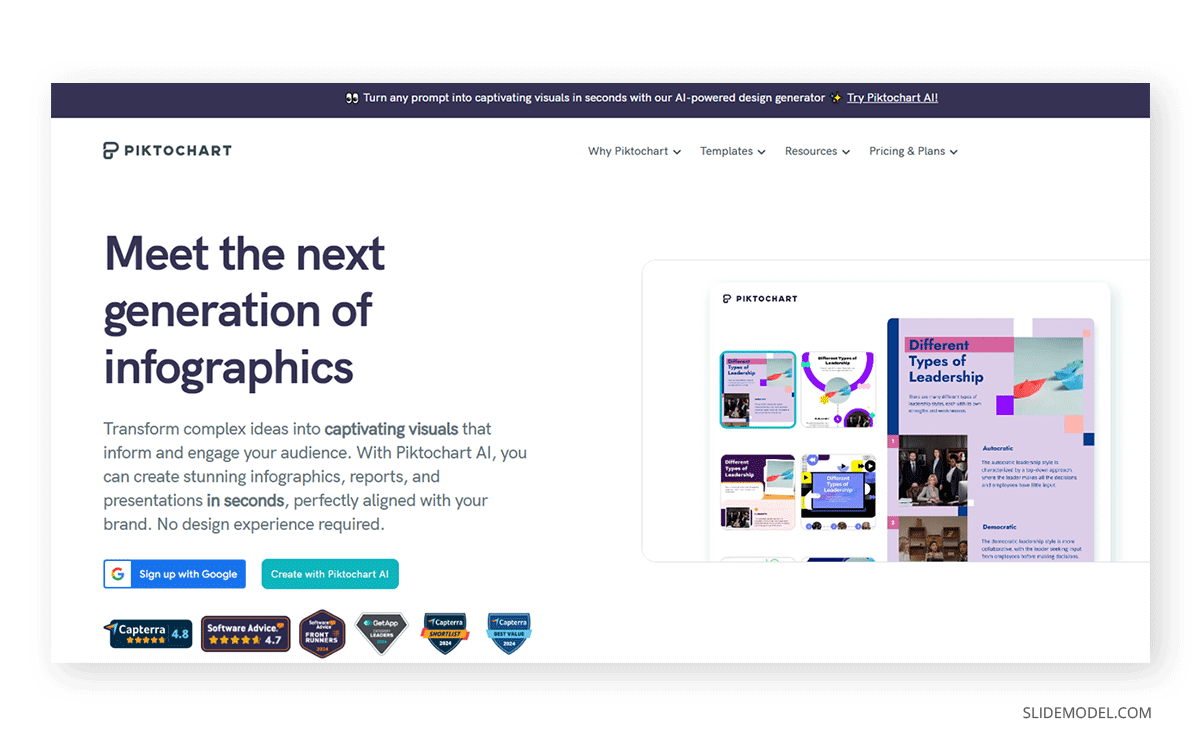
Its core strength lies in simplifying data-heavy content into digestible, visually engaging formats—ideal for educators, nonprofits, and small businesses lacking dedicated design teams. The platform offers over 600 professionally designed templates, many tailored for annual reports, surveys, and instructional materials, with drag-and-drop customization that requires no technical skill. A standout feature is its AI-powered “Text to Image” tool, which generates custom graphics from descriptive prompts (e.g., “a futuristic cityscape for a tech webinar”), though results vary in quality.
Piktochart’s asset library includes 2,000+ icons, charts, and illustrations, but animations are limited to basic entrance/exit effects, making it less dynamic than Prezi or Visme. Collaboration is straightforward: teams can comment on drafts and share editable links, though real-time co-editing isn’t supported.
Export options include PDF, PNG, and HTML5 (for web embeds), though interactive elements like clickable buttons aren’t supported. For academic users, Piktochart’s ability to transform dense research data into infographics or slide decks is invaluable—think about converting a 50-page whitepaper into a visually compelling Zoom presentation webinar. However, its limitations in advanced animation and interactivity make it less suitable for high-stakes marketing pitches.
Pitch
Another PPT alternative worth exploring is Pitch, which targets modern startups and enterprises with a collaborative, design-forward presentation approach. Its templates are distinctly contemporary—think asymmetrical layouts, bold color blocking, and embedded video snippets—catering to industries like tech, fashion, and media. Unlike Google Slides, Pitch emphasizes brand consistency: teams can create centralized brand hubs with approved fonts, colors, and logos, ensuring every deck aligns with corporate identity.
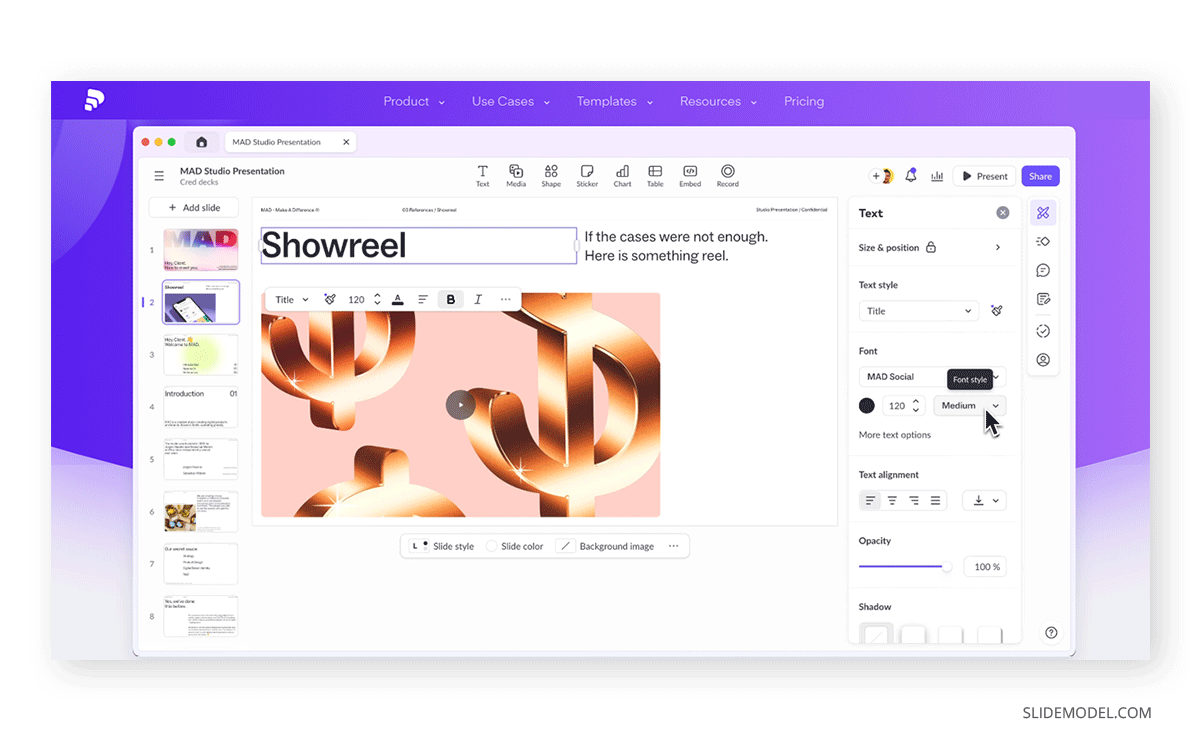
Collaboration features are robust, including real-time editing, granular permissions (viewer/editor/owner), and approval workflows for legal or leadership sign-off. Integrations with tools like Figma (for embedding live prototypes), Slack (for notifications), and Loom (for video messages) streamline cross-functional workflows. Pitch’s analytics dashboard tracks viewer engagement, showing which slides garnered the most attention—a boon for refining sales pitches or investor pitch deck updates.
Export options are limited to PDF and PowerPoint, with occasional formatting discrepancies. While Pitch’s interface is intuitive, its focus on modern aesthetics can be restrictive for traditional finance or government industries. For remote teams needing to balance speed with brand governance, Pitch is a compelling alternative to PowerPoint. However, its lack of offline editing (all projects are cloud-based) and premium pricing position it as a tool for scaling businesses rather than solopreneurs.
Beautiful.ai
Following a similar approach to SlideModel.ai, Beautiful.ai is another AI presentation maker tool that aims to bridge the gap between users and presentation design. Users select a template—such as a pitch deck, timeline, or SWOT analysis—and the platform’s “DesignerBot” AI dynamically adjusts layouts as content is added. For example, inserting a bulleted list automatically reformats text spacing and aligns images, ensuring slides remain visually coherent. This “set-and-forget” approach is perfect for time-crunched professionals in industries like consulting or finance, where branding precision is non-negotiable.
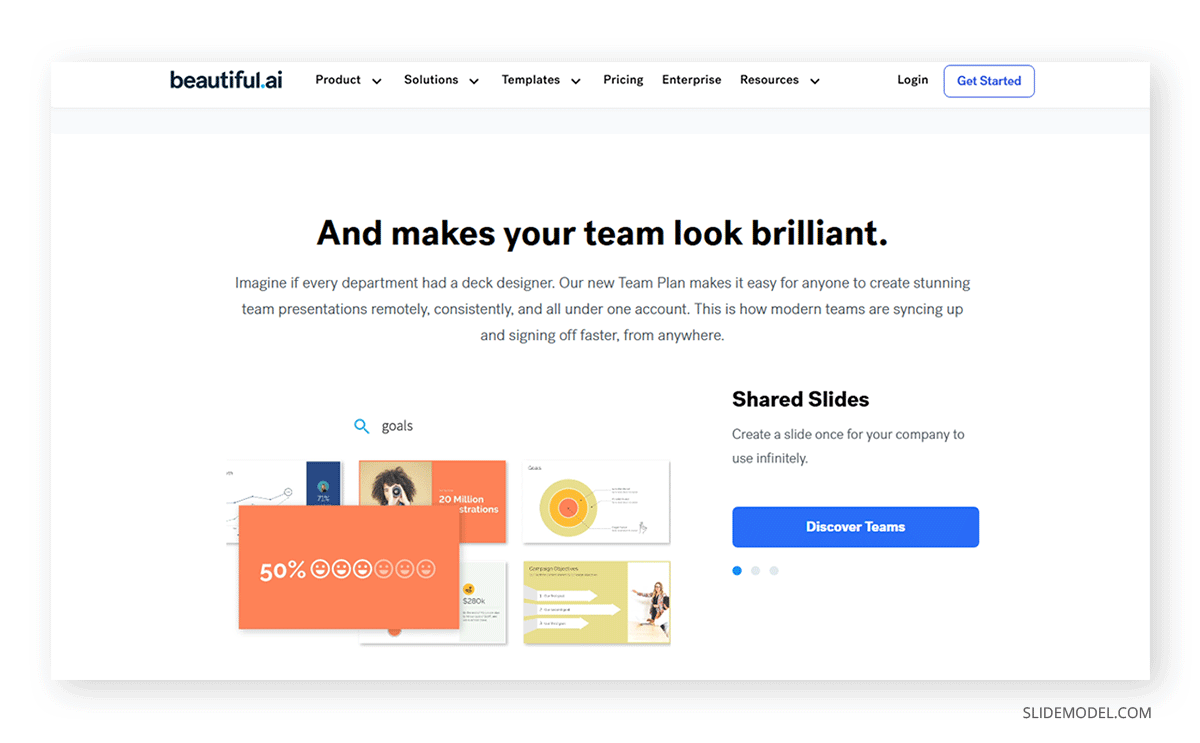
The template library includes 50+ smart slides optimized for everyday use cases, with charts that auto-update when linked to Google Sheets. Collaboration features are basic (commenting only), but the AI’s strict design rules minimize feedback loops—no more debating font sizes.
The main difference between this tool and SlideModel.ai is that designs made in Beautiful.ai aren’t editable. Users cannot freely reposition elements or customize transitions, even when importing the slide deck into PowerPoint. Visual elements are rendered static, as if they were images, limiting the editing aspect and not allowing advanced effects (i.e., PowerPoint transitions or PowerPoint animations). It is a standalone platform that creates presentation decks using AI technology, not a complementary tool for PowerPoint or Google Slides.
Haiku Deck
If you’re familiar with the core rules of PowerPoint presentations, then you get the why behind “one idea per slide.” Haiku Deck takes this approach to the next level with its zen philosophy: one idea per slide, paired with full-screen images from its curated library. Users can select one design theme, and the platform automatically formats text for readability.
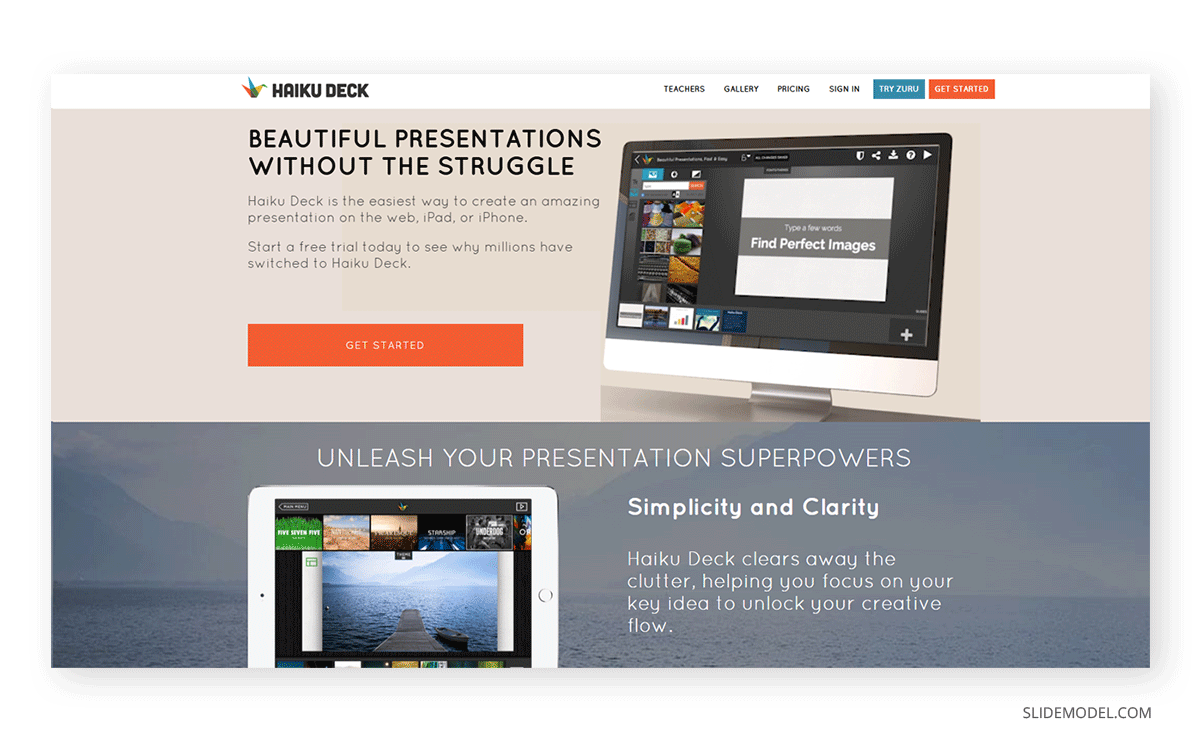
Animations are almost non-existent in this tool, which makes it ideal for presenters who want to convey their message by prioritizing visual impact over complicated slide designs. As a downside, the slide decks generated with this tool can feel somewhat rigid, as you don’t have as many presentation editing tools as other software alternatives to PowerPoint.
Zoho Show
Zoho Show, part of the Zoho Office Suite, is a cloud-based presentation tool designed for small to mid-sized businesses already embedded in the Zoho ecosystem (CRM, Finance, etc.). Its interface mirrors PowerPoint’s ribbon layout, easing the transition for traditional users, but adds unique features like offline editing—a rarity among web-based tools. Collaboration is seamless: teams can assign tasks, leave threaded comments, and track changes with version history. Zoho’s “Master Slide” feature allows global edits to fonts, colors, and logos, while “Slide Notes” support detailed presenter scripts.
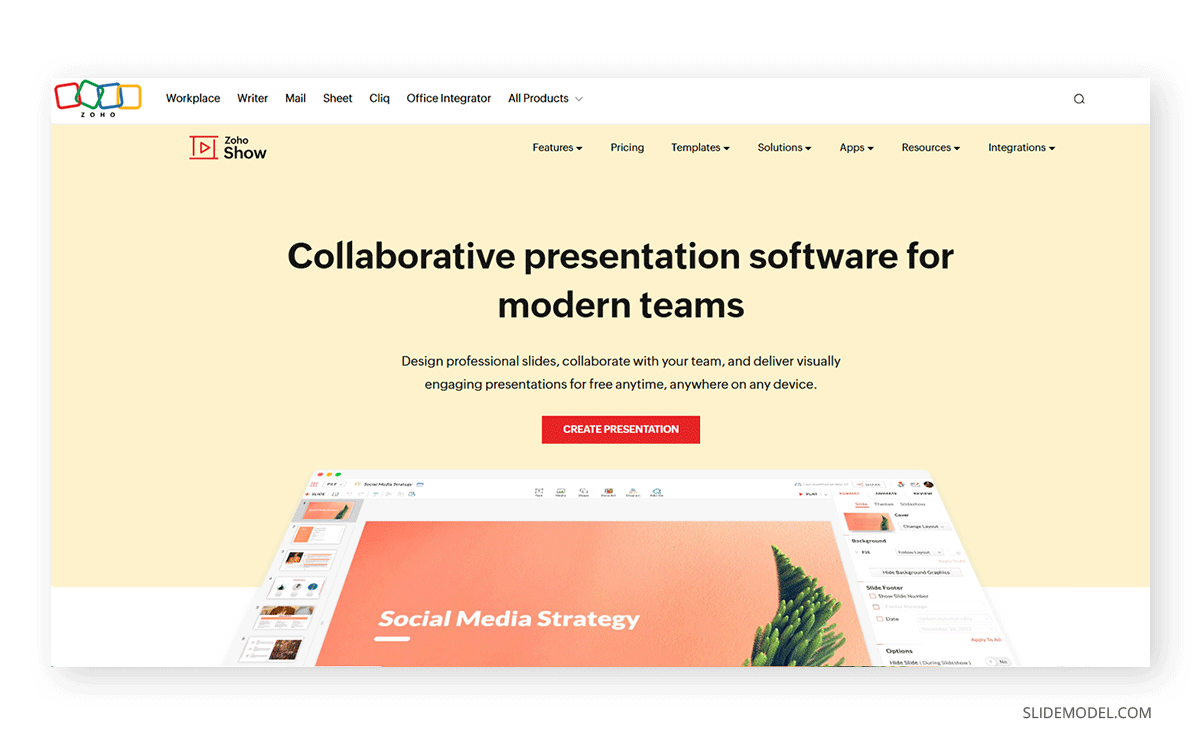
The platform integrates natively with Zoho CRM, enabling sales teams to auto-populate slides with client data or deal metrics. Templates are functional but lack the modern flair of Canva or Pitch, leaning toward corporate professionalism. Pricing is competitive: free for up to 25 users, with premium plans offering advanced analytics and cloud storage. Without a doubt, it is an attractive PowerPoint alternative software.
Export options include PDF, PowerPoint, and HTML5, though complex animations may not translate perfectly. Zoho Show’s strength is its affordability and integration depth—ideal for businesses already using Zoho apps for HR, invoicing, or project management. However, its design limitations and utilitarian aesthetics make it a hard sell for creative industries. Zoho Show is a pragmatic choice for organizations prioritizing cost-efficiency and ecosystem cohesion over cutting-edge design.
Ludus
How many times have you wished collaborative presentation design processes resembled Slack? Well, now it’s your chance with this PowerPoint substitute named Ludus. With a sleek UI, Ludus allows users to work with an extensive range of content options:
- Populating tables from manual data.
- Google Sheets integration for data.
- Native video blocks from copy/paste URL inside the app (compatible with YouTube, Instagram, etc.)
- Unsplash integration for stock images.
- Figma integration.
- Native SVG copy/paste from Illustrator, Figma, and other vector editors.
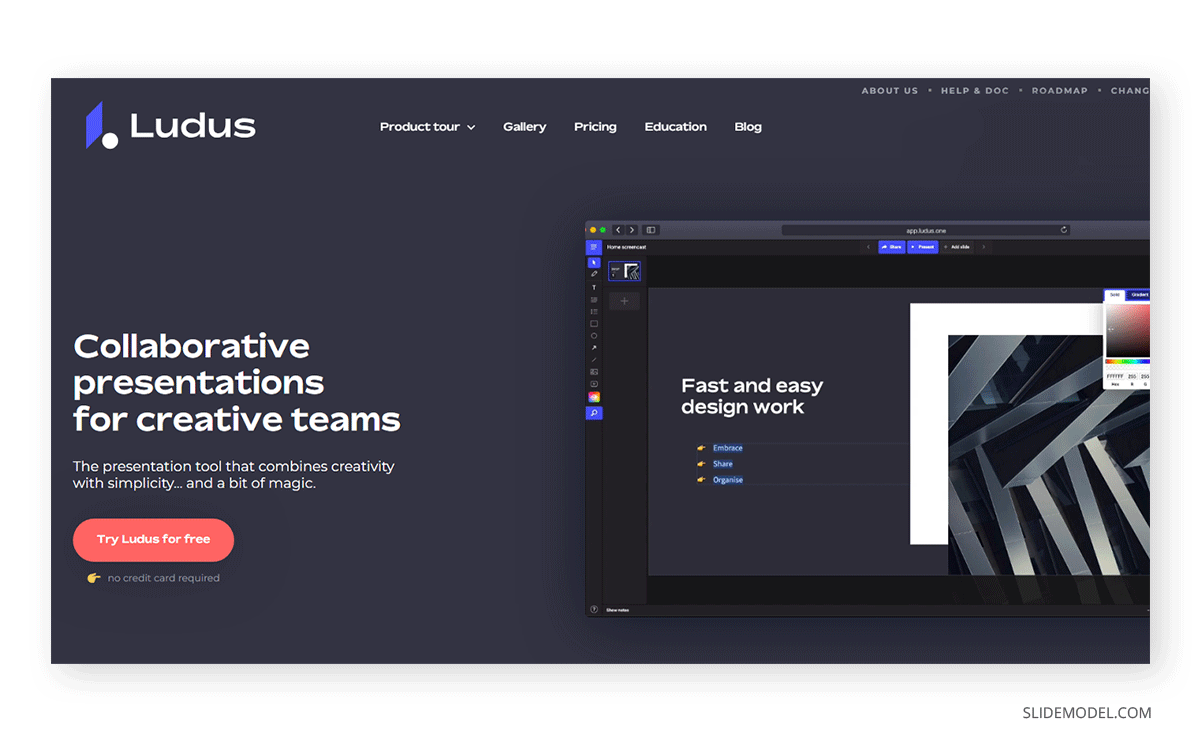
Developers can tweak designs using HTML/CSS, making Ludus uniquely suited for tech teams crafting interactive demos or embedded web content. The platform supports 3D model integration and clickable prototypes, ideal for SaaS companies creating product presentations. Collaboration features include real-time editing, granular permissions, and exportable version histories (almost as if working with a visual GitHub).
Export options range from PDFs to responsive HTML embeds, though offline presenting requires downloading large files. Ludus offers unparalleled versatility for creative agencies pitching immersive brand experiences or startups demoing apps. However, its niche focus and lack of pre-built templates (users start from blank canvases) limit appeal outside design-savvy circles.
Slides.com
Our next PowerPoint alternative software is a web-based presentation design tool that’s quite popular among developers and educators due to its code-friendly customization. Slides.com editor supports CSS/JavaScript overrides, which allow tech teams to craft pixel-perfect animations or embed custom widgets into presentation slides.
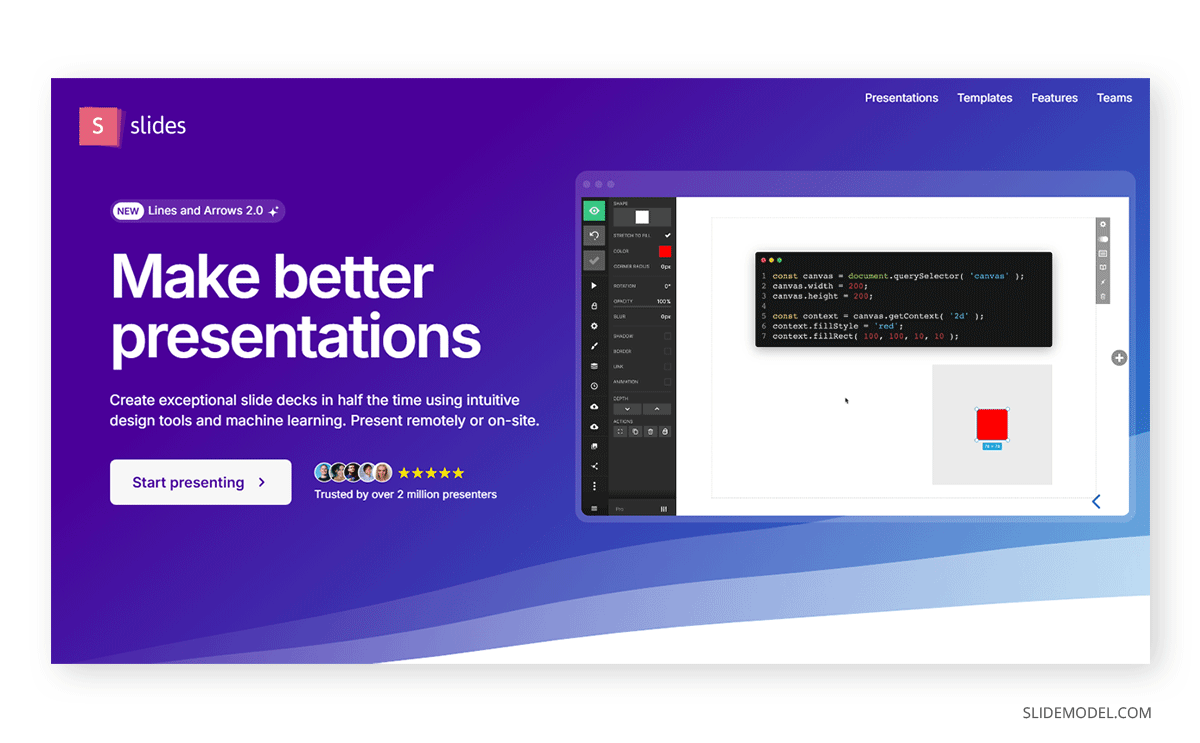
The available templates are primarily minimalistic, emphasizing content editing through its native tools rather than flashy, pre-made designs. Again, think of it as a solution intended for IT audiences who don’t go the extra mile to create a graphic design masterpiece but rather look for a compelling solution that allows them to create visual presentations in minutes.
Collaboration is straightforward: real-time editing and comments come standard, even on the lower-tier plans. For users familiar with web development, Slides.com allows presentations to be hosted directly inside custom domains, which is ideal for clients seeking to distribute slide decks inside their own websites.
Export options include PDF, PowerPoint, and Markdown, though complex code-based animations won’t survive conversion. For non-technical users, Slides’ simplicity is a double-edged sword: while it is easy to learn, it lacks advanced design tools like shape libraries or gradient editors. However, for developers creating documentation or open-source project pitches, Slides bridge the gap between code and visual storytelling.
Powtoon
If you’re looking for a creative substitute for PowerPoint, Powtoon specializes in animated explainer videos and presentations, blending drag-and-drop characters, props, and voiceover syncing. Its cartoonish templates are popular in e-learning, marketing, and internal training—imagine onboarding videos with talking avatars or product demos with motion graphics. They bring the illusion of cartoons into presentation design, which appeals to younger audiences looking for video presentations.
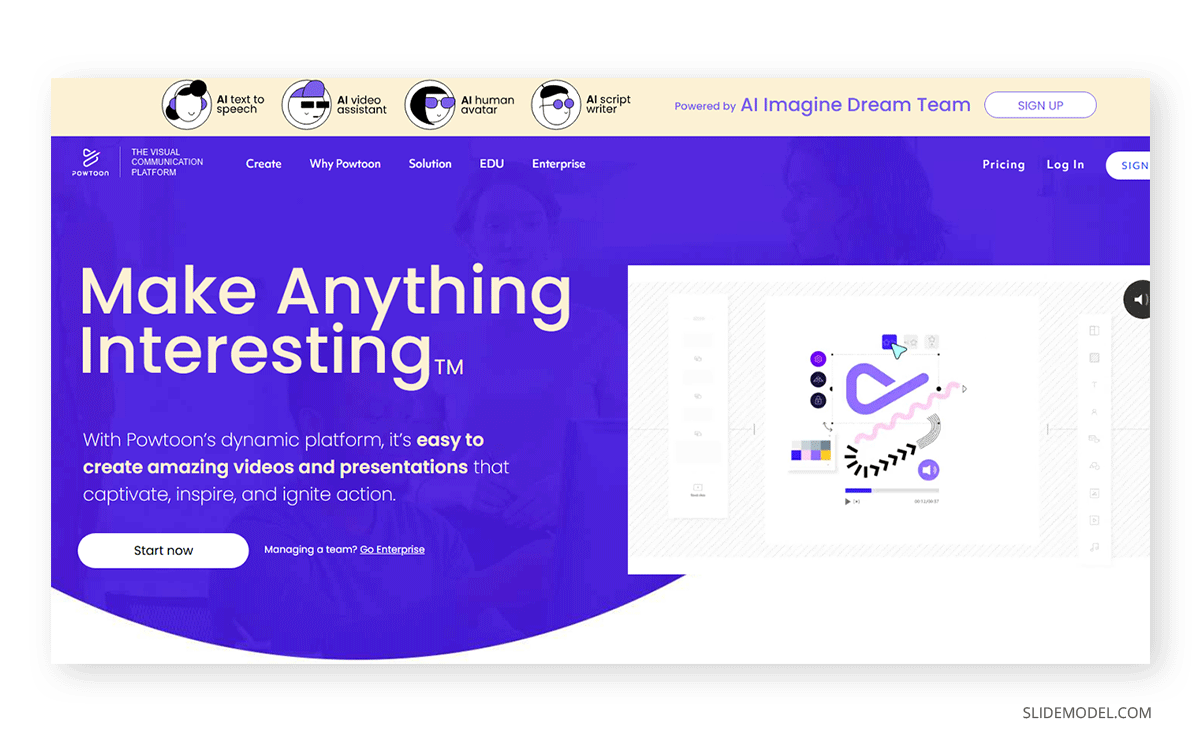
The editor includes a timeline view for frame-by-frame adjustments, though mastering it requires patience. Powtoon’s “Visual Script” feature auto-generates storyboards from text, while a library of pre-animated scenes (e.g., “office meeting” or “data dashboard”) accelerates production. Export options include MP4, GIF, and YouTube uploads, but interactive elements aren’t supported. Additionally, Powtoon offers an interesting selection of third-party integrations with tools like Microsoft Teams, Adobe Photoshop (which allows you to integrate your PSD designs into Powtoon’s videos), HubSpot, and even PowerPoint itself.
For educators or marketers needing to simplify complex topics through animation, Powtoon is a budget-friendly alternative to professional tools like Adobe After Effects. However, its stylistic limitations (everything skews playful) and performance hiccups make it less viable for formal corporate settings.
Adobe Express
Adobe Express (formerly Adobe Spark) leverages Adobe’s design heritage with premium templates and deep integrations with Creative Cloud. Features like “Text to Image” AI art, auto-resizing for social platforms, and access to Adobe Fonts/Stock cater to marketers and social media teams, making it ideal for repurposing presentations into other distribution channels. Also, Adobe Express features a content planner tool with native integration with social media networks – including TikTok.
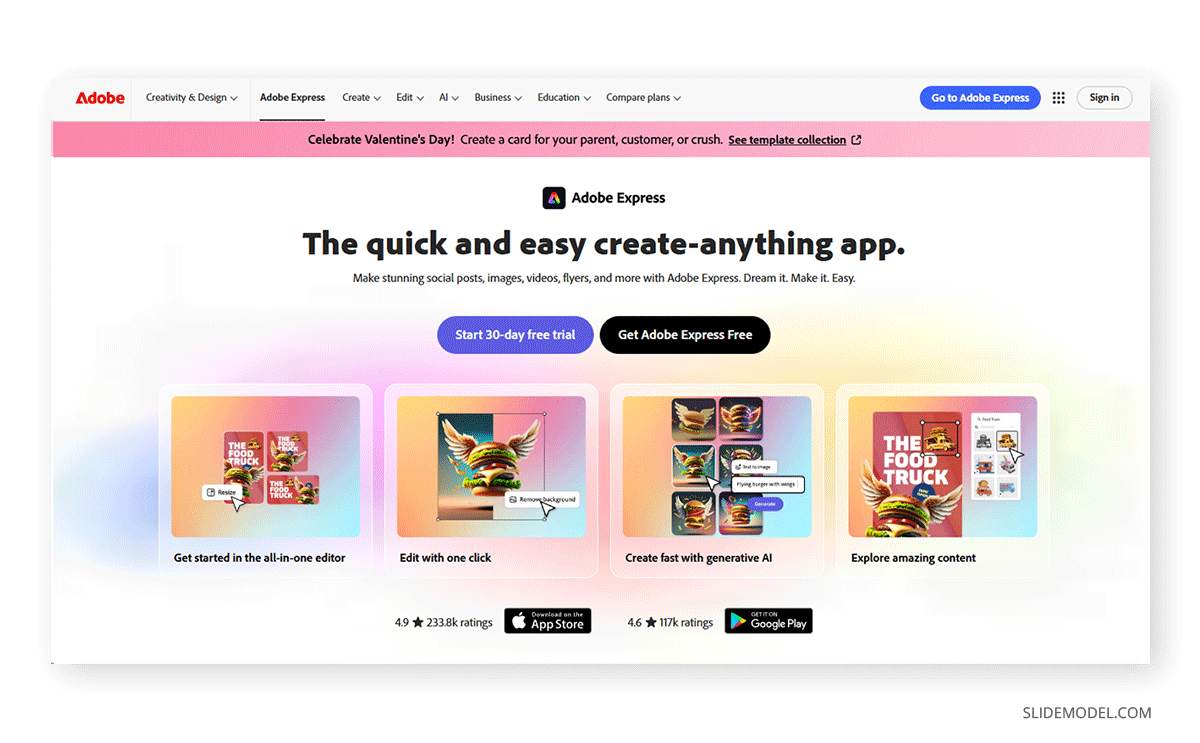
Collaboration is limited compared to Canva, but Express’s stock assets and subscription pricing (free for Creative Cloud subscribers) suit freelancers and small teams. Export options include 4K video and print-ready PDFs, though complex animations require Premiere Pro. For creatives seeking Adobe-quality outputs without the learning curve of Photoshop, Express strikes a balance in presentation design.
Venngage
If you intend to work with online cloud tools, Venngage is a worth-checking alternative to PowerPoint. It has a wide range of features to create high-end presentation slides, infographics, reports—any compelling visual required for a slide deck, you name it.
It’s particularly popular among marketers, educators, and small-to-medium enterprises (SMEs) who must communicate data-heavy content in engaging presentations. The platform offers hundreds of customizable templates tailored to specific industries, such as healthcare, tech, and education, ensuring users can find designs that align with their needs.
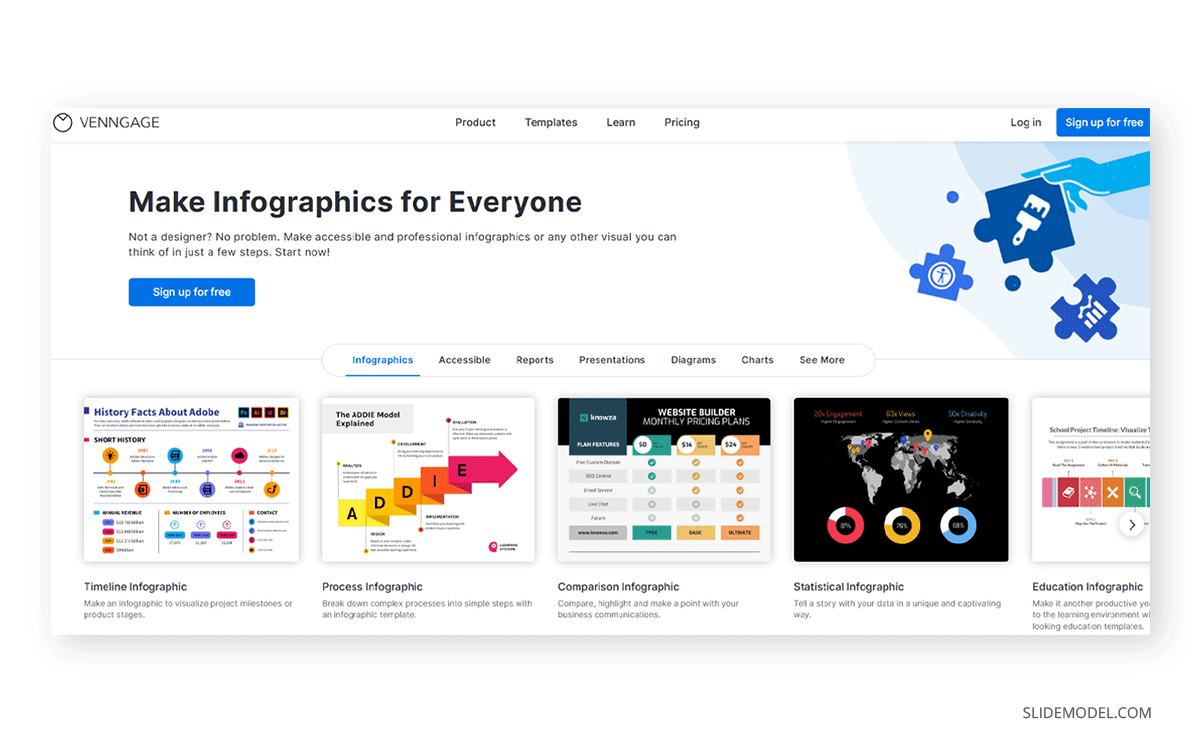
The drag-and-drop editor is intuitive and beginner-friendly, requiring no prior design expertise. Users can choose from over 2,000 icons, charts, and widgets to customize their visuals, while the data visualization tools support more than 30 chart types, including bar graphs, radar charts, and heat maps. Direct data imports from spreadsheets further streamline the process, making updating visuals as new data comes in easy. Collaboration features like team editing, comment threads, and version control facilitate seamless feedback loops, though real-time co-editing isn’t supported.
Venngage’s strengths lie in its accessibility and versatility. The platform democratizes design, enabling non-designers to create professional-quality infographics, reports, and social media visuals. Customizable brand kits ensure project consistency, while export options include PNG, PDF, and interactive HTML embeds. However, the platform has its limitations. Animation options are basic compared to tools like Powtoon, and the free version includes generic stock imagery that may not suit all use cases.
